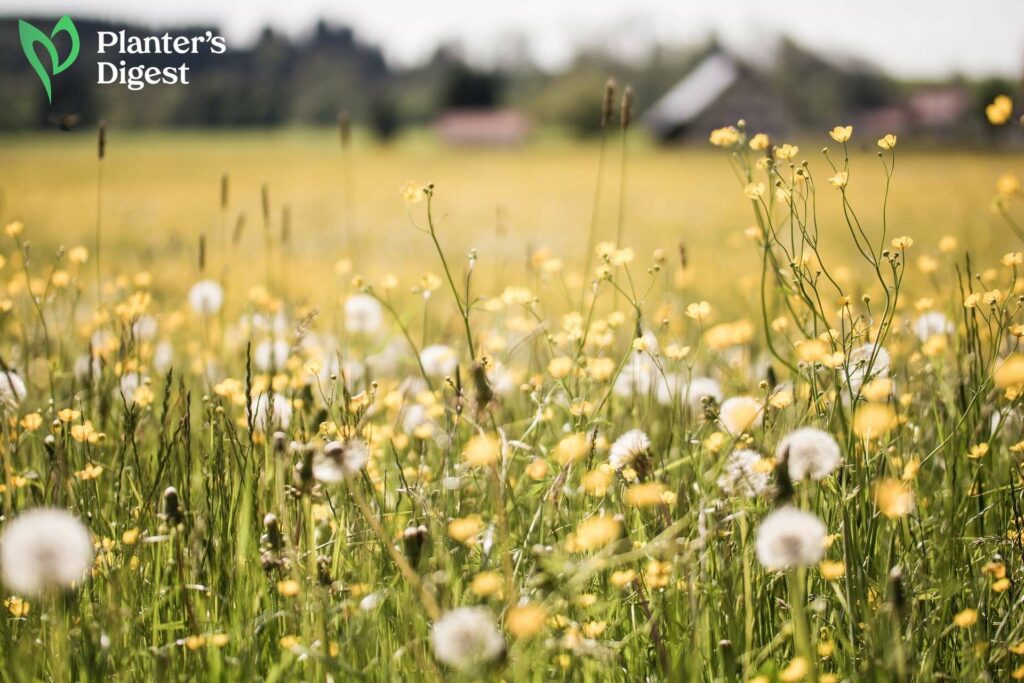
Take a look at those yellow flowers in the corner of your yard. Are those the dandelions you’ve been wanting to have?
Before you start jumping up and down for joy, take a hot minute and get up close and personal with those flowers – because the truth is, they may not actually be dandelions, but nasty weeds!
Don’t get played by those dandelion dupes – we’ve been there, and it truly is a mood dampener. Here’s a guide on common weeds that resemble dreamy dandelions.
Weeds That Look Like Dandelions
1. Catsear (Hypochaeris radicata)


| Scientific Name | Hypochaeris Radicata |
| Common Name | CatsearCat’s EarFalse DandelionFlatweedHairy Cat’s Ear |
| Family | Asteraceae |
| Habitat | Lawns Urban areasVacant lotsGrassy areas along railroads and roadsidesWaste areas |
Catsear is a perennial weed from the Asteraceae family. It is native to Europe and commonly found in lawns, urban areas, vacant lots, and grassy and waste areas.
This noxious weed forms a rosette of lance-shaped leaves with toothed lobes. Smooth hairs cover the leaves on their upper and lower areas, and they release a milky sap when broken.
Catsears produce flowers with yellow heads in spring and form wind-borne seeds, similar to a dandelion. It also has edible roots that are roasted and sold as a caffeine-free alternative.
Compared with dandelions, catsear’s stem branches into multiple blooms, while dandelions only have one flower per stem.
2. Coast Dandelion (Agoseris apargioides)
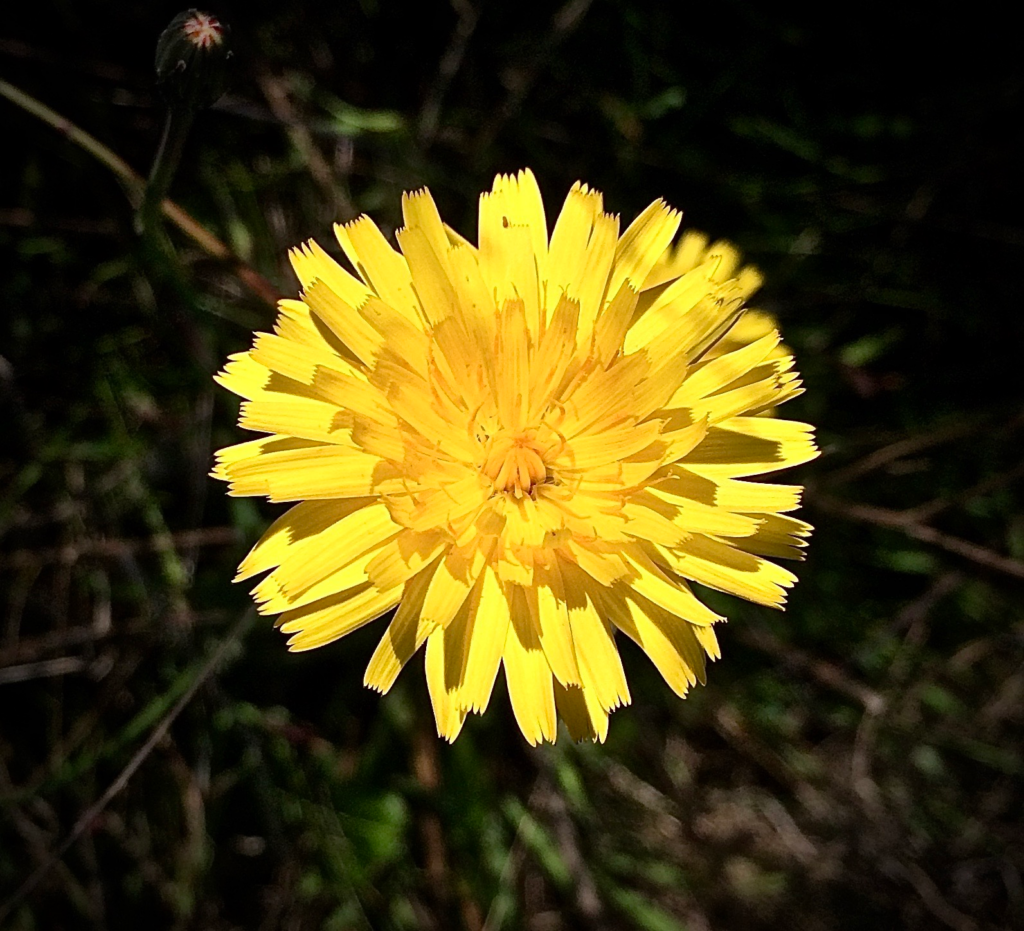
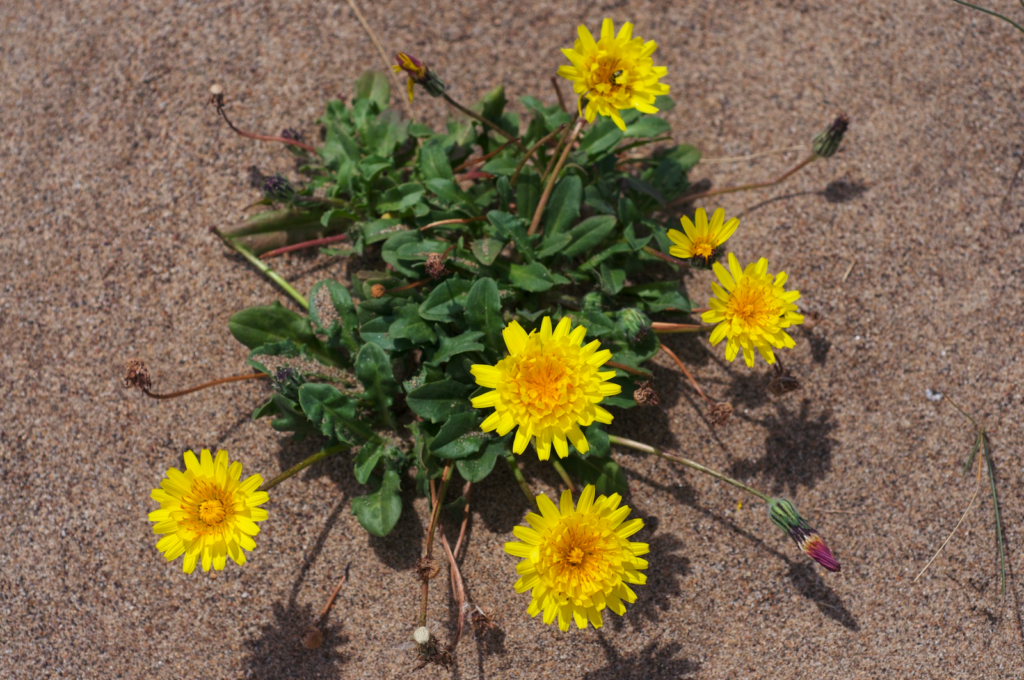
| Scientific Name | Agoseris apargioides |
| Common Name | Seaside agoserisSeaside false-dandelionCoast dandelion |
| Family | Asteraceae |
| Habitat | Coastal dunes |
The coast dandelion is a perennial weed from the Asteraceae or the sunflower family. It is indigenous to the coastal dunes of the United States Pacific coast.
This plant has slender leaves with rounded lobes along its margins. It distinctly grows in low rosettes while half-buried in the sand.
The coast dandelion also has rhizome-looking and unbranched stems that produce bright yellow flower heads during the blooming season.
3. Narrowleaf Hawksbeard (Crepis tectorum)
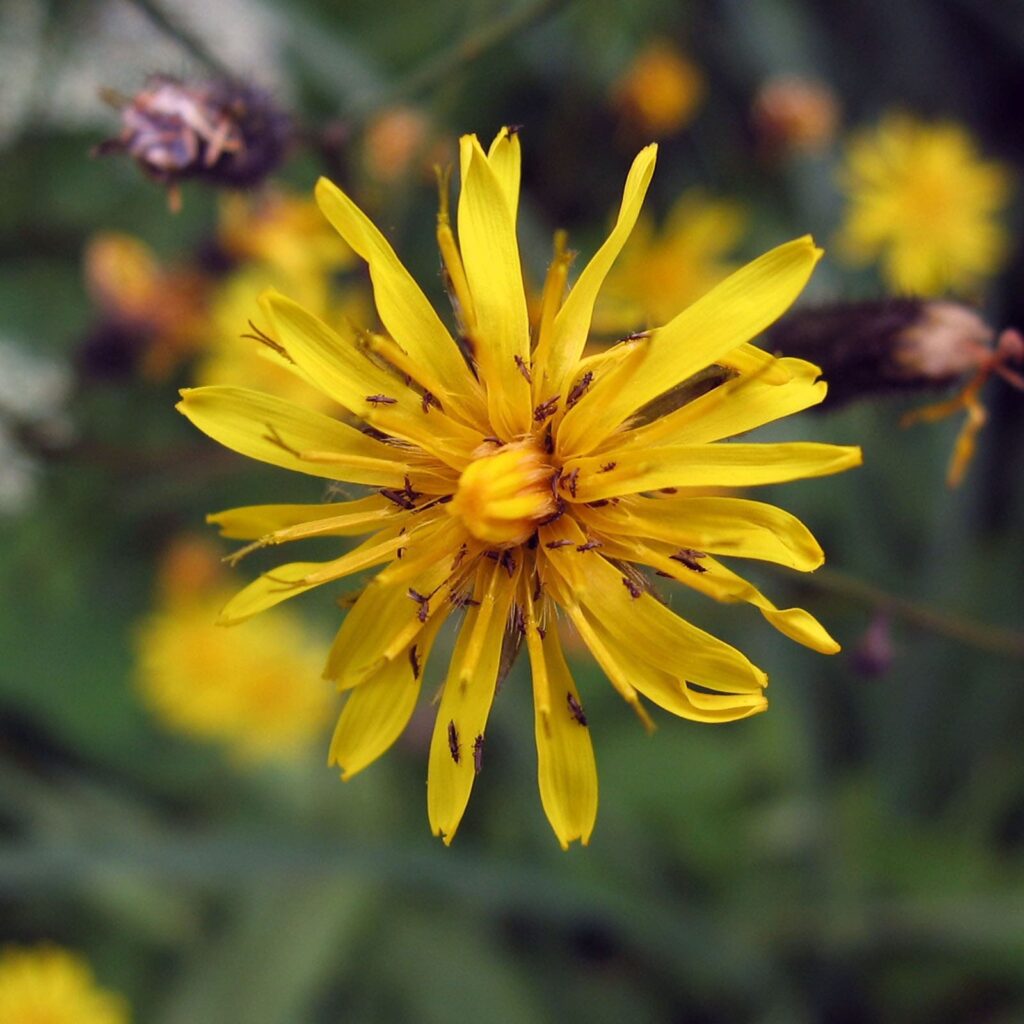
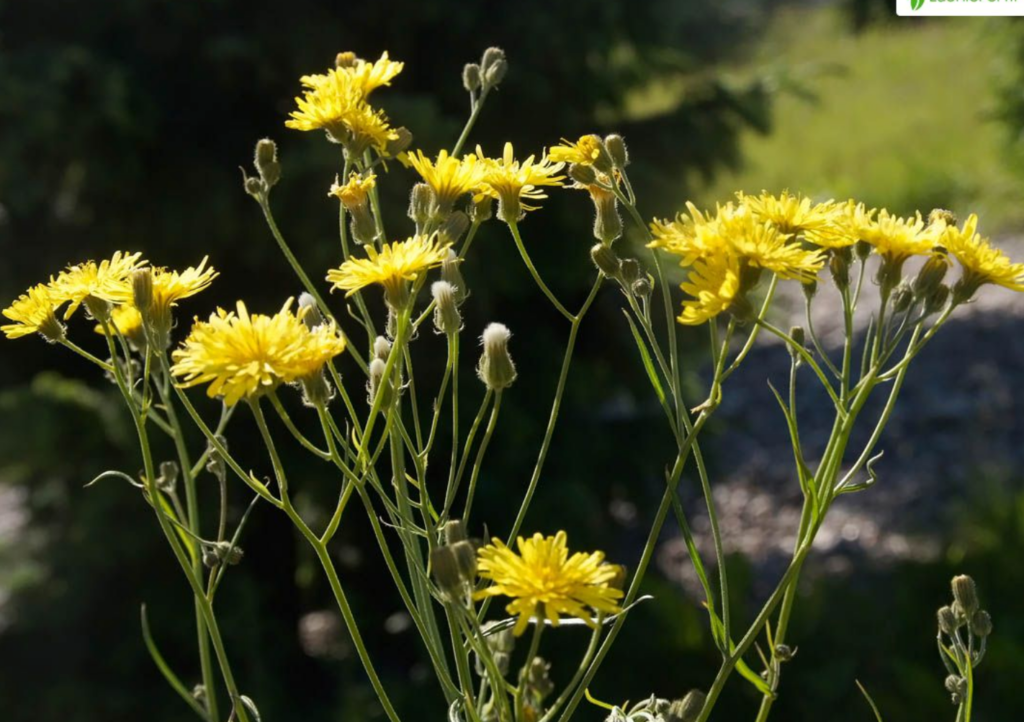
| Scientific Name | Crepis tectorum |
| Common Name | Narrowleaf hawksbeardNarrow-leaved hawk’s-beard |
| Family | Asteraceae |
| Habitat | ParklandWaste areasConventional or reduced tillageForageHay fieldsRoadsides |
The Narrowleaf Hawksbeard is an annual weed commonly found in parklands, waste areas, forages and hay fields of Europe, Central Asia and some parts of China. It thrives in sunny and moist places.
This invasive weed is easily recognizable for its slender, alternated, and toothed foliage curled inward in its margins. Its leaves secrete a white milky sap called “latex” when cut open.
The Narrowleaf Hawksbeard has an upright stem that branches into multiple stalks, where bright yellow flowers bloom.
Compared to dandelions, this weed has smaller and more narrow leaves. It also grows in clusters, while dandelions grow alone.
4. Meadow Hawkweed (Pilosella caespitosa)

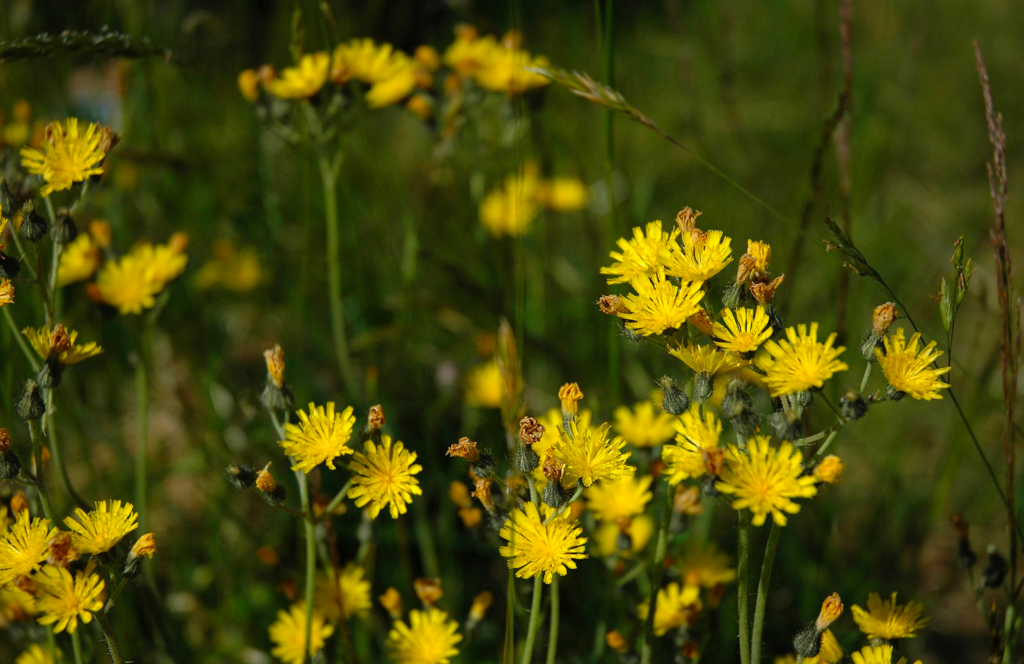
| Scientific Name | Pilosella caespitosa subsp. caespitosa |
| Common Name | Field HawkweedKing DevilMeadow HawkweedYellow Hawkweed |
| Family | Asteraceae |
| Habitat | WoodlandNeglected landscapesAbandoned grasslandsOpen spacesDump sitesRoadsides |
The Meadow Hawkweed is a perennial weed indigenous to Europe. Still, it has become a common ornamental plant in North America and nearby regions.
This drought-tolerant plant is usually found in woodland areas with well-drained soils. They are highly invasive as they spread through their rhizomes, wind-dispersed seeds, and stolons.
The foliage of the Meadow Hawkweed grows as a basal rosette of leaves with long elliptical shapes covered in smooth hairs. Its stems, on the other hand, are covered with blackish hairs and release a milky sap when broken.
On the top of these stems, clusters of yellow flower head bloom. These flowers later turn to blowballs that disperse seed through the wind.
5. Bristly Hawkbit (Leontodon hispidus)

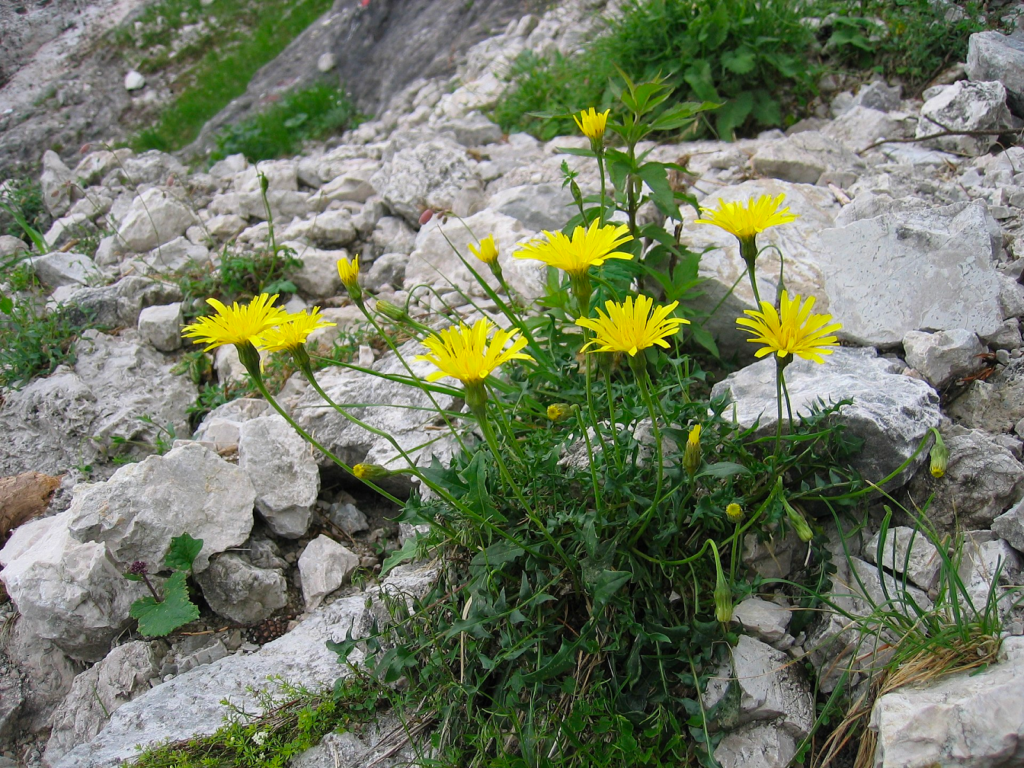
| Scientific Name | Leontodon hispidus |
| Common Name | Bristly hawkbitRough hawkbit |
| Family | Asteraceae |
| Habitat | Hay meadowsPastures GrasslandsRoadside vergesRailway banksRock ledges Quarries |
The Bristly Hawkbit is a perennial weed found in Europe and North America. It is common in hay meadows, pastures, grasslands, roadside verges, railway banks, rock ledges, and quarries.
The leaves of the Leontodon hispidus form a basal rosette with toothed and hairy leaves, while its stems grow upright and unbranched.
The Bristly Hawkbit blooms bright yellow flowerheads from summer until fall. The flowers later turn into seed heads dispersed through the wind.
Unlike dandelions, the Bristly Hawkbit has narrower leaves and hairy stems.
6. Mountain dandelions (Agoseris glauca)


| Scientific Name | Agoseris glauca |
| Common Name | False dandelionPale agoserisPrairie agoserisShort-beaked agoseris |
| Family | Asteraceae |
| Habitat | Dry meadowSagebrush habitats Foothills of mountain ranges |
Mountain dandelions are also part of the Asteraceae family native to North America.
They are usually found in dry meadows, sagebrush habitats, montanes, and foothills of mountain ranges. This plant has sword-shaped leaves that secrete milky latex when broken.
Similar to dandelions, mountain dandelions grow one bright yellow flower per stem. However, unlike dandelions, this weed plant produces a small fruit that contains seeds.
7. Sagebrush False Dandelion (Nothocalais troximoides)
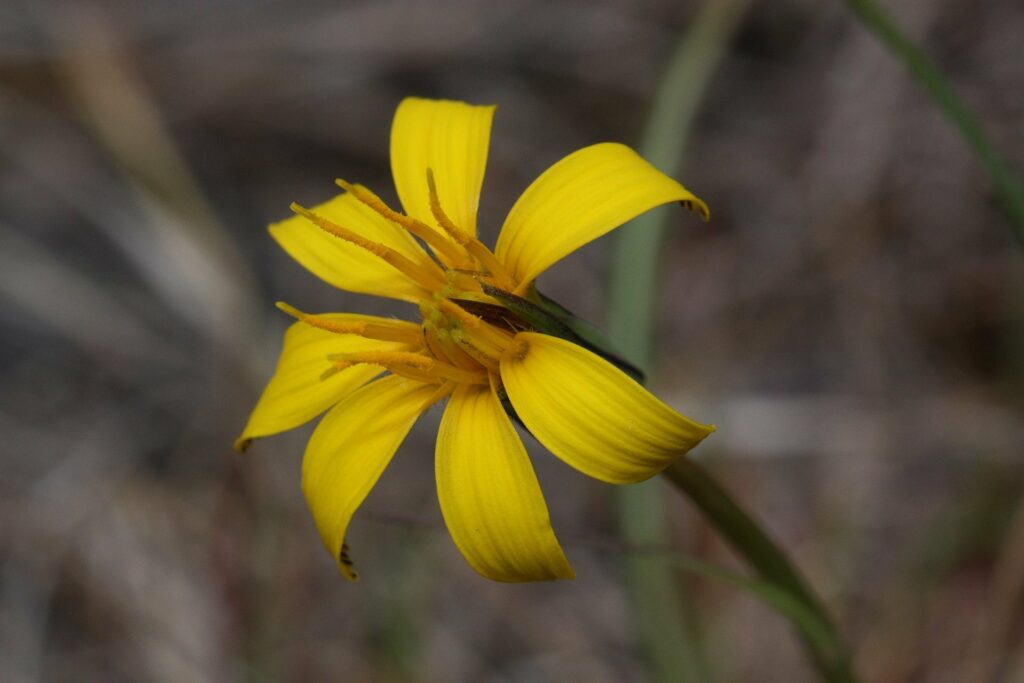

| Scientific Name | Nothocalais troximoides |
| Common Name | Sagebrush false dandelion |
| Family | Asteraceae |
| Habitat | SagebrushPlateaus Mountains |
The sagebrush false dandelion is a perennial herb from the Asteraceae family and native to North America and British Columbia. It usually grows in sagebrush, plateaus, and mountains.
This plant has a thick woolly stem that grows up to 25 centimeters tall. At the bottom of the stem, leaves with crinkled wavy edges and covered with tiny hairs grow.
During the blooming season, bright yellow florets grow from the stem. Later, they turn into cylindrical fruit with silvery white bristles.
8. Desert Chicory (Pyrrhopappus)


| Scientific Name | Pyrrhopappus |
| Common Name | Desert ChicoryCarolina Desert-chicoryTexas Dandelion |
| Family | Asteraceae |
| Habitat | PasturesOpen grasslandsPrairiesClay soilsDisturbed areas |
The Desert Chicory commonly grows in pastures, prairies, clay soils, and disturbed areas of Eastern and Southern United States.
It has upright stems that are 6 to 20 inches long. When broken, these stems release a milky sap substance.
During spring to winter, the Desert Chicory blooms bright yellow flowers that have 3 to 4 centimeters in width. It also has yellow rays and disc flowers similar to other members of the Asteraceae family.
Desert Chicory flowers are known for facing the direction of the sun throughout the day.
9. Coltsfoot (Tussilago farfara)

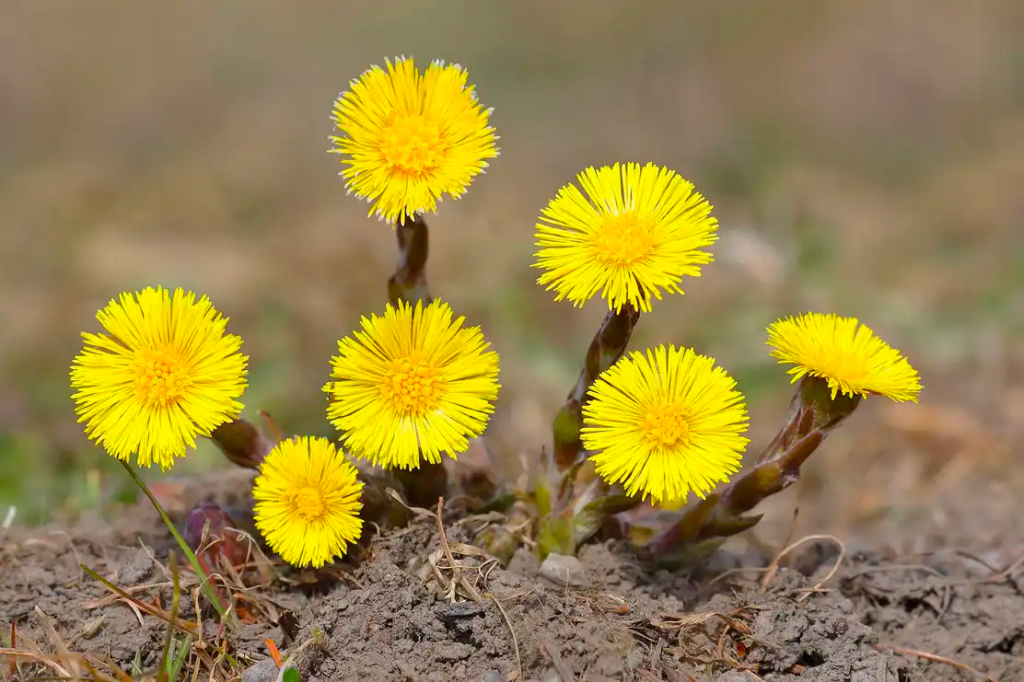
| Scientific Name | Tussilago farfara |
| Common Name | Coltsfoot |
| Family | Asteraceae |
| Habitat | Waste areasDisturbed areas RoadsidesPaths |
Coltsfoot is another weed from the Asteraceae family. It is commonly found in waste areas, disturbed areas, and roadsides.
It has scaly stems, and its flowers appear before leaves grow on the plant. After that, Coltsfoot blooms small bright yellow flowers during early spring.
Coltsfoot flowers are cup-shaped and open, while dandelions are rounded at the top.
10. Sow Thistle (Sonchus)


| Scientific Name | Sonchus |
| Common Name | Common SowthistleHare’s ThistleMilky TasselSowthistleSow Thistle |
| Family | Asteraceae |
| Habitat | Urban roadsidesWastelandArable field margins Disturbed groundCoastsMountainsPiedmont |
Sow thistles are common lawn weeds that come from the Asteraceae family. It is also found in urban roadsides, wastelands, arable field margins, disturbed grounds, coasts, mountains, and piedmonts.
Sonchus plants deeply-cut and lobed leaves. When broken, this weed releases a white milky sap called “milk thistle.”
A distinct characteristic of this plant is that flowers in each flowering shoot open during the day and close during the night.
After pollination, the sow thistle flowers turn into fluffy seed heads that disperse the seeds by wind.
Did we miss any dandelion impostors that need to be added to this list? Let us know in the comments below!




